This Bible was printed partly in our dialect as early as 1478
The book for the women of Yesse was the Bible. The Bible is composed of two parts: the Old Testament and the New Testament. The Old Testament was originally written in Hebrew. The very first translation of this part was in Greek. This translation is known as the Septuagint, which literally means Seventy. Tradition has it that seventy translators were set to work on the translation, independently of each other, and they created seven literally identical translations, as they had all been inspired by God. The Septuagint emerged between 250 and 50 B.C.
The New Testament was originally in Greek.
In the century of Christ, this was the standard written language in the eastern area on the Mediterranean Sea, where these texts originated. When Christianity spread towards the west of the Roman Empire, where Latin was the written language, a need arose for a Latin translation. At first, only parts of the Bible were translated. Around 400, however, a complete Latin translation appeared: the Vulgate. This name literally means: the widely distributed one. It has continued to be widely distributed to this very day, as it is still the official version of the Catholic Church.
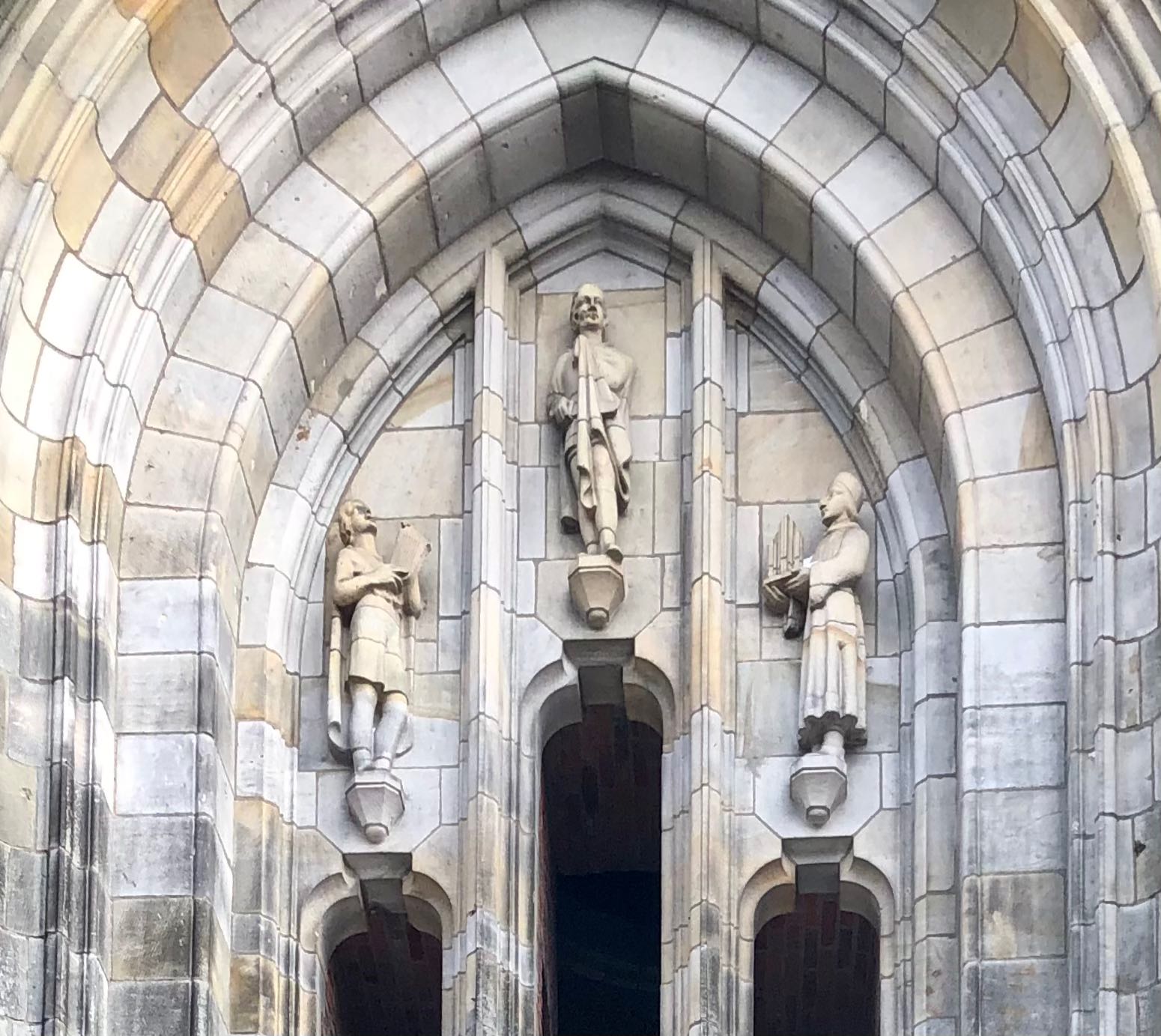
The number of translations increased as Christianity spread throughout Europe.
The first translation into Saxon appeared around 700: the Heliant. This is more a rephrasing than it is a translation, and thus a new text, in verse form. The bard Bernlef, who was travelling along the coast of Groningen and Friesland at that time, is mentioned as a possible author of this work. His authorship, however, is far from certain.
A successor in the Saxon-language region was the Cologne Bible of 1478.
It is not clear who created this Middle Dutch or Lower Saxon translation of the complete Bible. It seems that we should seek the translator(s) within the sphere of influence of the Modern Devotion. This religious movement originated in Deventer around 1380, and it soon became popular in the IJssel region and the Rhine area. Its representatives preached a return to the simplicity of the old Christian church, and they found an audience with many people, if only because they often used the vernacular. In Cologne, there was a monastery of Carthusians, who were also sympathetic to the reform notions of the Modern Devotion.
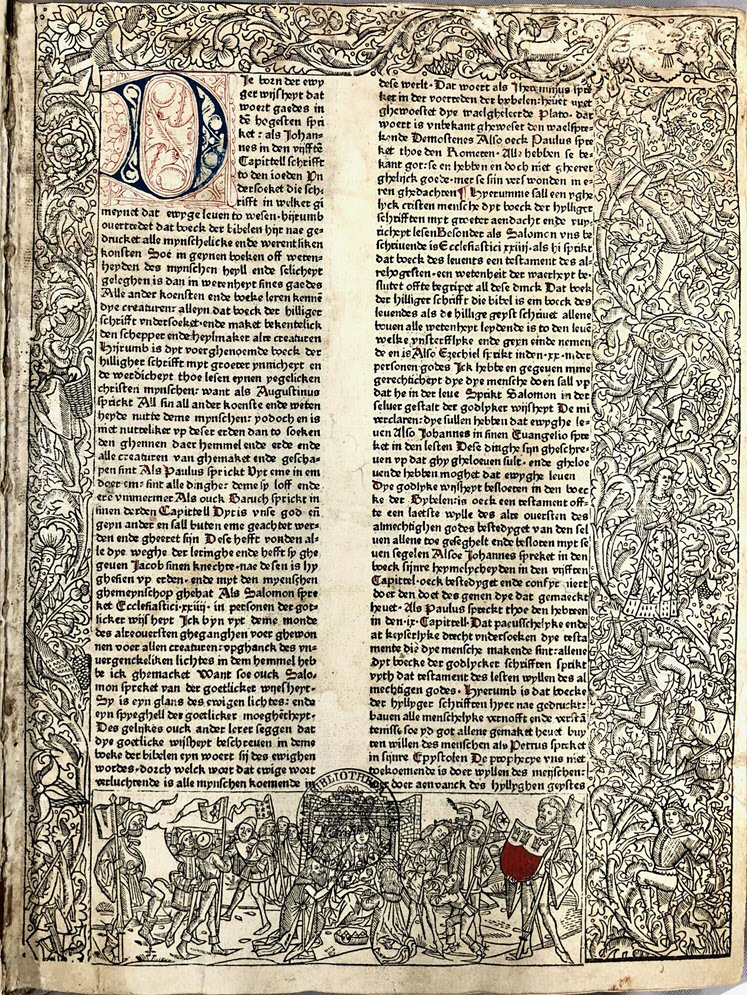
The ecclesiastical authorities were not pleased with Bibles in the vernacular.
For example, the English priest and Bible translator William Tyndall (1494-1536) was arrested by the Inquisition in Antwerp and burned at the stake in Vilvoorde. The publication of the Cologne Bible was thus clearly a bold enterprise—in the lion’s den, as Cologne was the seat of a powerful bishop and a conservative university. One year after this Bible appeared on the market, Pope Sixtus IV praised the university in Cologne for its efforts to prevent “females from assuming knowledge of the Sacred Scriptures.” This Lower Saxon Bible lent itself perfectly to that end. Women did not attend school or university, and they therefore did not usually know any Latin. They were thus dependent on translations of the Bible in the vernac-ular, like this Cologne edition.
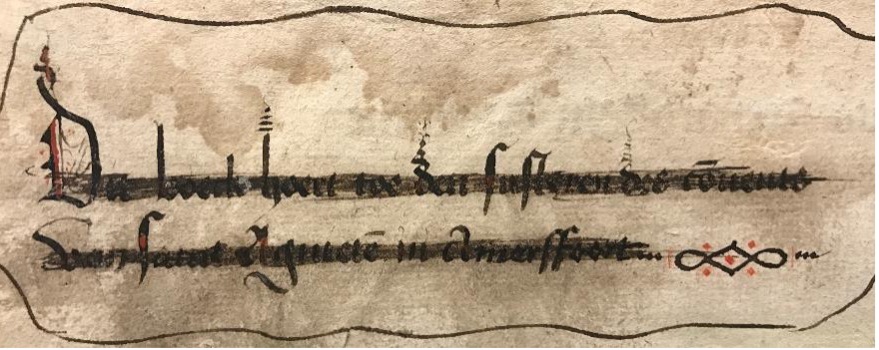
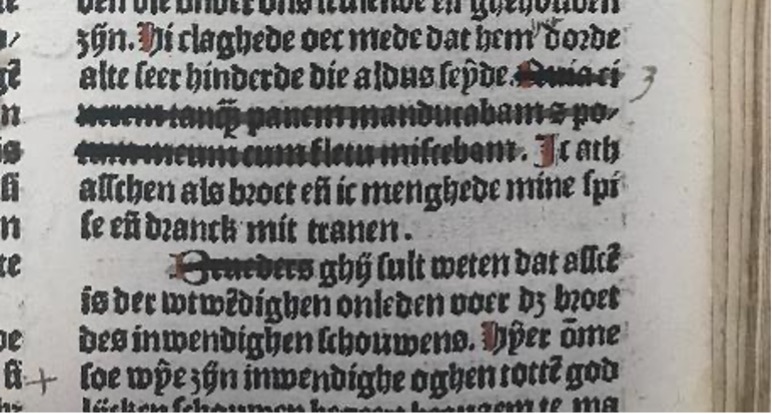
A telling example in this context is another incunable in the University of Groningen Library: an edition of sermons by the Cistercian Bernard of Clairvaux translated into Dutch and printed at Zwolle in 1495. Our copy once belonged to the Saint Agnes convent in Amersfoort. In the printed text, all references to ‘brothers’ and all passages in Latin have been crossed out in ink. The convent of Yesse could also have owned such books. Although remnants of book fittings have been found on the convent grounds, they unfortunately do not tell us anything about the contents of the books. To date, only one book from Yesse has been tracked down: a manuscript containing a part of the Old Testament—in Latin, and thus written by a man, who reveals his identity at the end: “Brother Hendrik Elverick, monk, 44 years old, on 26 May 1474 in the convent of Yesse near Groningen.”
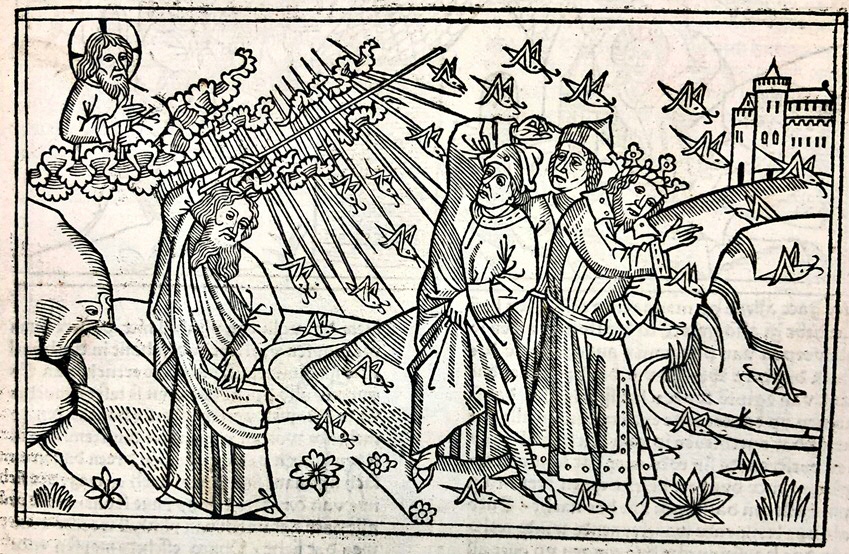
The Cologne edition is also referred to as the Illustrated Bible.
This is because it contains an exceptionally large number of wood-cut prints that illustrate the narrative. For decades, these wood-cut prints would have a major influence on the manner in which the story of the Bible was illustrated in print. Remarkably, many ‘second and third-tier’ events are portrayed, while the usual highlights in the visual arts throughout the centuries—like Christ’s birth, crucifixion and ascension—are not illustrated in this Bible.
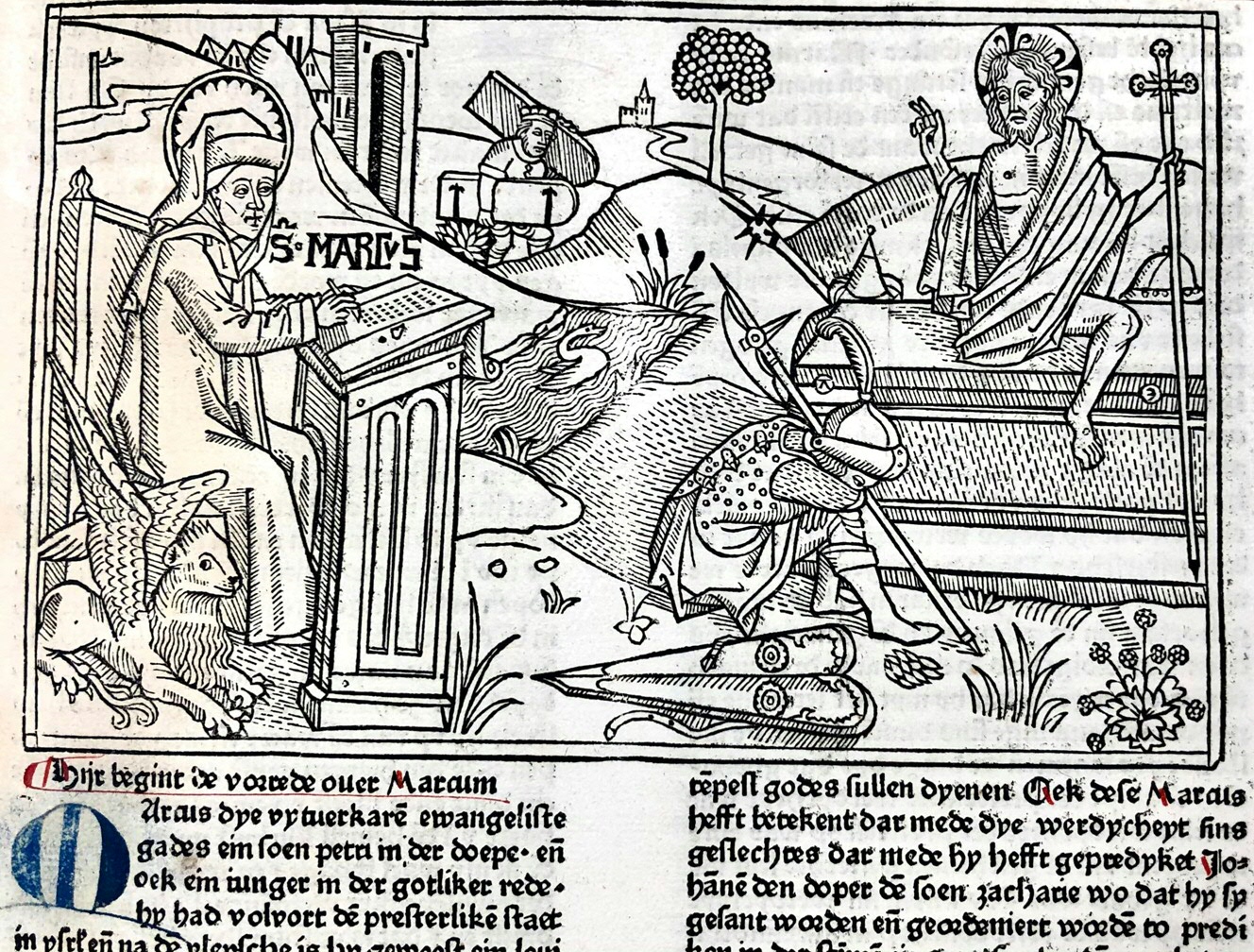
Did the convent of Yesse have a copy of this Bible?
Perhaps even this very one? Given the information presented above, probably not. The Bible holdings of the convent of Yesse would have been limited to a hand-written or printed Vulgate. Perhaps it was limited to no more than a few parts of the Bible. This is quite possible, since, at that time, printed books were purchased unbound. Purchasers would have loose quires bound. They thus did not need to purchase the entire book. This Cologne Bible was also not printed in one go, from A to Z (Genesis to Revelation). The most popular parts, like the Psalms and the Gospels, were the first to roll off the printing press.
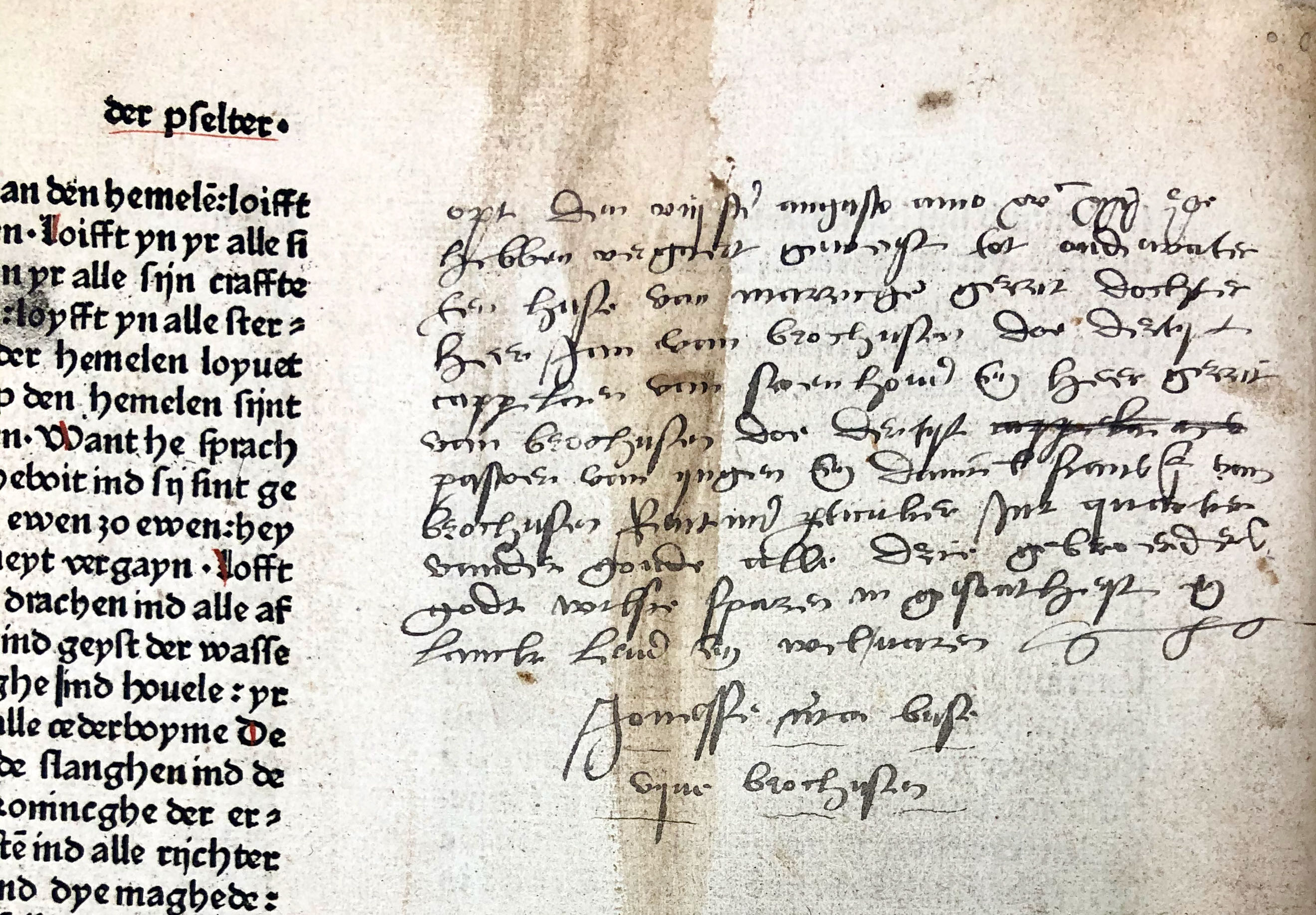
We know virtually nothing about the owners of this Bible copy.
We say ‘virtually nothing’, because folium 269 bears a handwritten note that on 8 August 1531 there was a meeting in Oudewater “ten huse van Marritjen Gerrit dochter, heer Jan van Brochusen doe dertijt cappelaen van Scoenhoven ende heer Gerrit van Brochusen doe dertijt pastoer van Yngen ende Daniel Fransz. van Brochusen Rentmeester particulier int quartier vander Goude, alle drie gebroeders. Godt wilse sparen in gesondheijt ende lanck leven ende welvaren”, i.e. “in the house of Marritjen daughter of Gerrit, Lord Jan van Brochusen then chaplain of Schoonhoven, and Lord Gerrit van Brochusen then pastor of Yngen, and Daniel Fransz. van Brochusen private steward in the district of Gouda, all three brothers. May God preserve them in health, longevity and prosperity.” Nothing is said about the reason for this meeting. It is also not clear why these words are written here. They merely paint a scene in the history of the Netherlands, as does, for example, Vincent van Gogh's The Pota-to Eaters.
Sources
- A.M.W. As-Vijvers, ‘Middeleeuwse handschriften uit Groningse kloosters—een kwart eeuw later/Medieval manu-scripts from Groningen convents—twenty-five years afterwards’ in: Illuminatie, Illustratie, Boekband & Bibliotheek in de Noordelijke Nederlanden. Belgian-Dutch Binding Society. Special edition of De Gulden Passer (Blue Series), ed. M. De Schepper (Antwerp 2012), pp. 13-33
- C.C. de Bruin & F.G.M. Broeyer, De Statenbijbel en zijn voorgangers. Nederlandse Bijbelvertalingen vanaf de Reformatie tot 1637 (Haarlem 1993)
- S. Corsten, ‘Die Kölner Bilderbibeln von 1478. Neue Studien zu ihrer Entstehungsgeschichte’ in Gutenberg-Jahrbuch, 1957, pp. 72-93
- S. Corsten, ‘The Illustrated Cologne Bibles of c. 1478: Corrections and Additions’ in Incunabula. Studies in Fifteenth-Century Printed Books Presented to Lotte Hellinga (London 1999), pp. 79–88
- Jos.M.M. Hermans, ‘Cisterciënzer handschriften uit Groningen, waaronder een handschrift uit het Zuid-Groningse klooster Essen/Jesse (1474)’ in: Het Noorden in het midden: opstellen over de geschiedenis van de Noord-Nederlandse gewesten in Middeleeuwen en Nieuwe Tijd (Assen 1998), pp. 256-268
- S. de Jong, Sermones Bernardi in Duytssche. De plaats van de preken van Bernardus van Clairvaux in de spirituele opvoeding van de tertiarissen van St Agnes te Amersfoort (Groningen 2017, Bachelor’s thesis)
- J. Stevenson, ‘Women’s Education’ in: Brill’s Encyclopaedia of the Neo-Latin World (Leiden 2014), vol. 1, pp. 87-99

